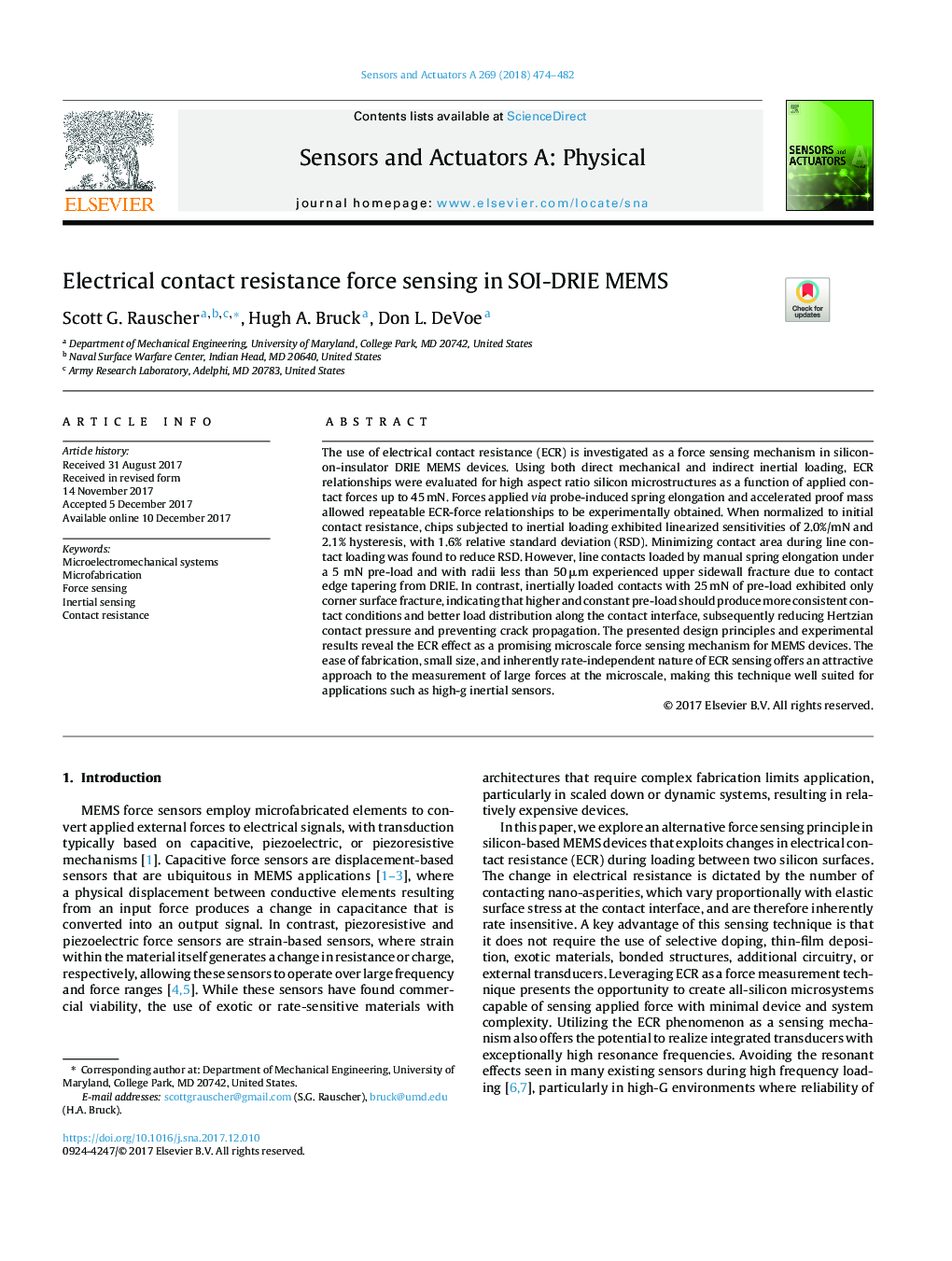| Article ID | Journal | Published Year | Pages | File Type |
|---|---|---|---|---|
| 7133926 | Sensors and Actuators A: Physical | 2018 | 9 Pages |
Abstract
The use of electrical contact resistance (ECR) is investigated as a force sensing mechanism in silicon-on-insulator DRIE MEMS devices. Using both direct mechanical and indirect inertial loading, ECR relationships were evaluated for high aspect ratio silicon microstructures as a function of applied contact forces up to 45â¯mN. Forces applied via probe-induced spring elongation and accelerated proof mass allowed repeatable ECR-force relationships to be experimentally obtained. When normalized to initial contact resistance, chips subjected to inertial loading exhibited linearized sensitivities of 2.0%/mN and 2.1% hysteresis, with 1.6% relative standard deviation (RSD). Minimizing contact area during line contact loading was found to reduce RSD. However, line contacts loaded by manual spring elongation under a 5 mN pre-load and with radii less than 50â¯Î¼m experienced upper sidewall fracture due to contact edge tapering from DRIE. In contrast, inertially loaded contacts with 25â¯mN of pre-load exhibited only corner surface fracture, indicating that higher and constant pre-load should produce more consistent contact conditions and better load distribution along the contact interface, subsequently reducing Hertzian contact pressure and preventing crack propagation. The presented design principles and experimental results reveal the ECR effect as a promising microscale force sensing mechanism for MEMS devices. The ease of fabrication, small size, and inherently rate-independent nature of ECR sensing offers an attractive approach to the measurement of large forces at the microscale, making this technique well suited for applications such as high-g inertial sensors.
Keywords
Related Topics
Physical Sciences and Engineering
Chemistry
Electrochemistry
Authors
Scott G. Rauscher, Hugh A. Bruck, Don L. DeVoe,
